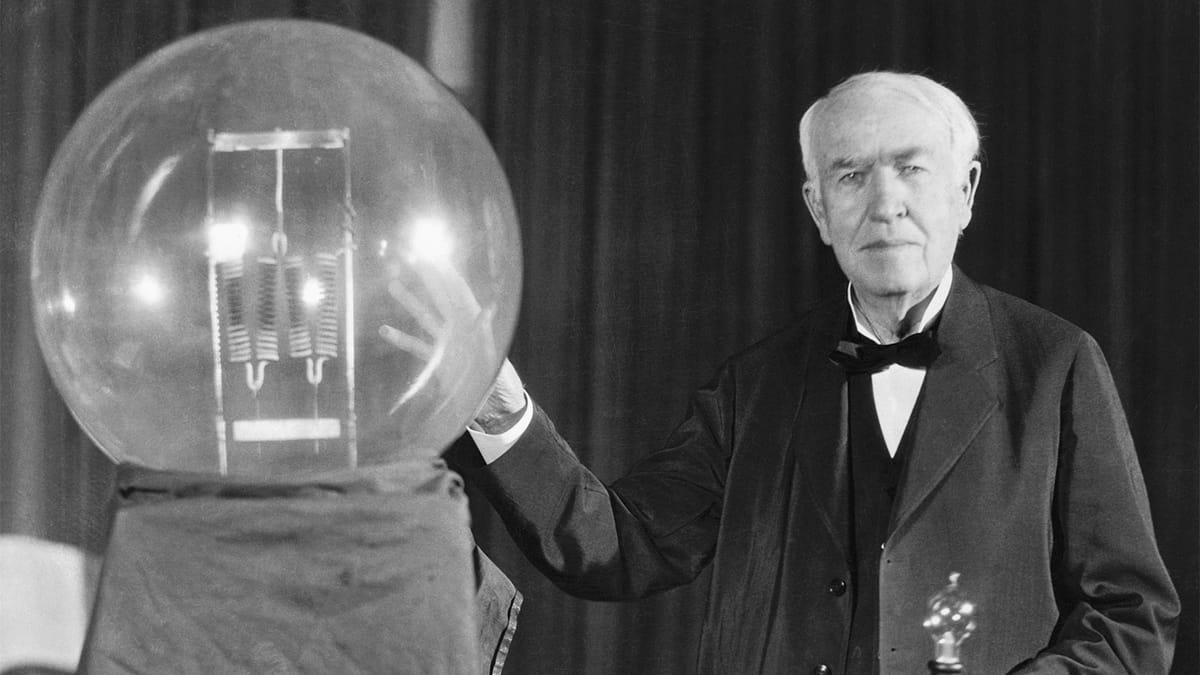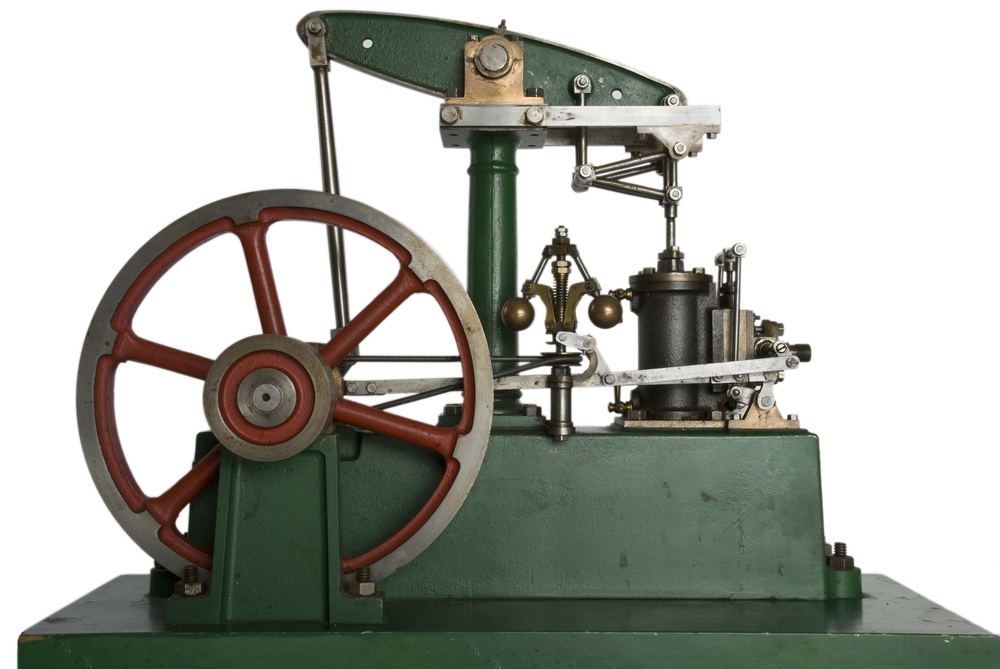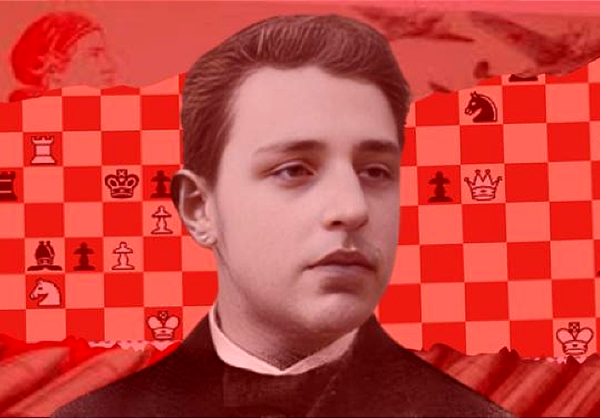How Edison pretended that he had invented the light bulb

From Tara Isabella Burton for the Smithsonian magazine: "In the autumn of 1878, Thomas Alva Edison had a problem. He hadn’t invented the light bulb—yet. Or, to put it more precisely, he had invented a light bulb, but he couldn’t keep it lit for more than a few minutes at a time. He still hadn’t figured out how to regulate the temperature of the light bulb’s internal filament, meaning the incandescent bulb would immediately overheat, and the filament would promptly melt down. Unfortunately, Edison was running out of time. All over North America and Europe, inventors like him were working on—and patenting—their own electric projects. Sooner or later, somebody would wind up harnessing electricity. Two Canadians, Henry Woodward and Mathew Evans, had already patented an inefficient design four years before."
The Sicilian mafia got its start controlling the market for oranges and lemons

From research by Arcangelo Dimico, Alessia Isopi and Ola Olsson: "Since its first appearance in the late 1800s, the reasons behind the rise of the Sicilian mafia have remained a puzzle. We argue that the mafia arose as a response to an exogenous shock in the demand for oranges and lemons, following Lind's discovery in the late eighteenth century that citrus fruits cured scurvy. More specifically, we claim that mafia appeared in locations where producers made high profits from citrus production for export. Operating in an environment with a weak rule of law, the mafia protected citrus production from predation and acted as intermediaries between producers and exporters. Using original data from a parliamentary inquiry in 1881–1886 on Sicilian towns, the Damiani Inquiry."
Building the Hoover dam required figuring out how to cool four million yards of concrete

From Daniel Ganninger: "The Hoover Dam is as tall as a 60-story building and was the highest dam in the world when it was completed in 1935. It spans the Colorado River on the border between Arizona and Nevada, weighs more than 6.6 million tons, and withstands pressures of 45,000 pounds per square foot at its base. To achieve these feats, Hoover Dam was made with 4.26 million yards of concrete. But this much concrete couldn’t be laid in one solid block because of the massive release of heat generated from the chemical reaction that takes place as concrete cools. If the dam had been built in one continuous pour, it would have gotten so hot that it would have taken 125 years for the concrete to cool."
Ishi, the last remaining member of a tribe wiped out by a 19th century genocide

From Notes From the Frontier: "For tens of thousands of years, his people had lived in the beautiful country that would someday become northern California, among the mountains, meadows rich in bulbs, nuts and berries, forests glutted with big game and grizzlies, rushing rivers choked with salmon. The Yahi were a prosperous people, but as whites flooded into their ancestral land, they were decimated first by disease and then by guns. The 19th-century California genocide nearly wiped out the Yahi, and their parent tribe the Yani. Settlers set bounties of 50¢ a scalp and $5 per head for dead Yahi. In 1865, when Ishi was five years old, his village was attacked in the Three Knolls Massacre, and 40 tribe members were killed. The small group of last remaining Yahi, including Ishi and his family, hid in the mountains for the next 44 years."
Why wasn't the steam engine invented earlier?

Editor's note: This one is really long, and kind of dense, but it is also fascinating, so I hope some of you will take the time to read it!
From Age of Invention, by Anton Howes: "By the 1620s, then, many of the key elements for a steam engine were already coming into fairly widespread use. Scientists across Europe, inspired by Drebbel’s perpetual motion and Santorio’s thermometer, were eagerly pursuing the possibilities from expanding and contracting gases. And Drebbel had invented a widely-used thermostatic feedback system — a general concept that would later prove extremely useful in making steam engines practicable. Even the general idea of applying the contraction of gas to motive power was also gradually coming into use, though thus far only for moving very light weights. So what was the hold up? Did any work towards a Savery-style atmospheric engine take place in the three quarters of a century between 1620 and the 1690s?"
Eastern philosophy says there is no "self," and science agrees

From Chris Niebauer at Big Think: "The brain-powered individual, which is variously called the self, the ego, the mind, or “me,” lies at the center of Western thought. In the worldview of the West, we herald the greatest thinkers as world-changers. There is no more concise example of this than philosopher René Descartes’ famous statement, “Cogito, ergo sum,” or, “I think, therefore I am." Western philosophy typically conceptualizes the self as a stable, controlling entity, comparable to a pilot, while Eastern philosophies such as Buddhism argue that the self is an illusion, a byproduct of our thought processes. Modern neuroscience provides evidence that aligns with the Eastern view, revealing that the left hemisphere of the brain constantly creates narratives to interpret reality, leading to a mistaken identification with these self-narratives."
Canada's easternmost city is closer to Venice, Italy than to Vancouver
From Simon Kuestenmacher on Twitter




